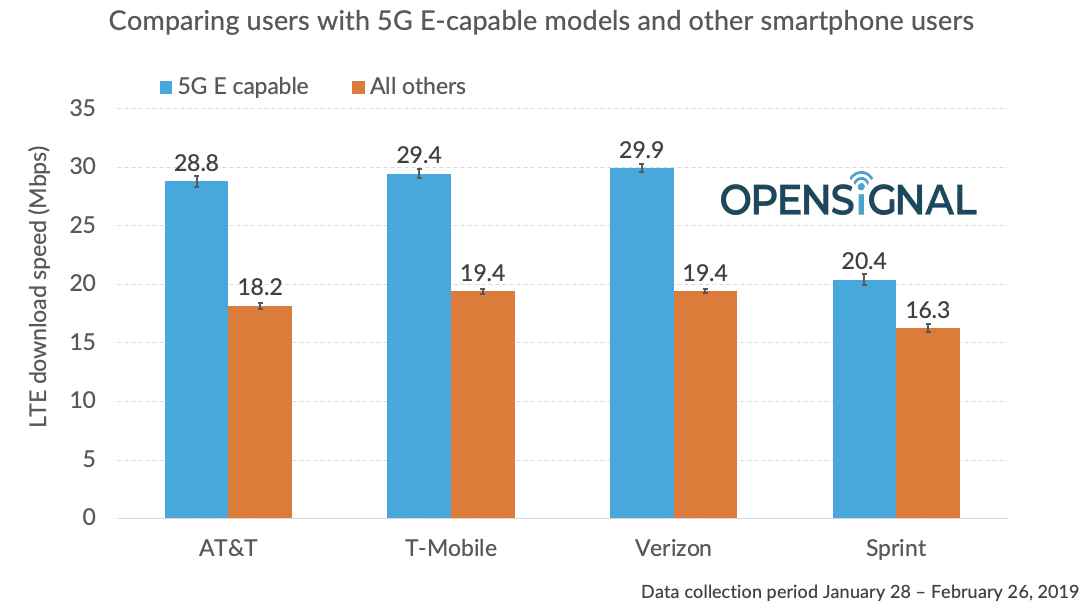Fortunately, the sentiment behind this quote isn’t always accurate. Sometimes statistics can reveal lies. AT&T has recently taken a lot of heat for misleadingly branding advanced 4G networks as “5GE.” Ian Fogg at Opensignal published a post where he draws on Opensignal’s data to assess how AT&T’s 5GE-enabled phones perform compared to similar phones on other carriers. The results:1

In response to AT&T’s misleading branding, Verizon launched a video advertisement showing a head-to-head speed comparison between Verizon’s network and AT&T’s 5GE network.
In that video, Verizon’s 4G LTE network comes out with a download speed near 120Mbps while AT&T’s 5GE network came out around 40Mbps. That, of course, seems funny given the Opensignal data suggesting the networks deliver similar speeds on average.
A portion of the Verizon video—not long enough to show the final results—showed up in a Twitter ad. That ad led to a Twitter exchange between myself; Light Reading’s editorial director, Mike Dano; and Verizon’s PR manager, Steven Van Dinter. Dinter explained that Verizon chose to film in a public spot where AT&T’s 5GE symbol was very strong. I take Dinter’s word that there wasn’t foul play or blatant manipulation, but it is funny to see Verizon fighting misleading branding from AT&T with a misleading ad of its own.
Footnotes
- The image comes from Ian Fogg’s article on Opensignal’s website. Note this statement from Opensignal’s article:
“Opensignal’s analysis here looks at the smartphone models which AT&T displays the 5G E name onto when the model connects to a particular LTE network standard. Opensignal is choosing not to differentiate between the times when 5G E is shown and when it is not, because we wish to compare the 5G E experience with the users connecting to the other US carriers that do not show 5G E but offer the same 4G technologies. In other words, just as 5G E is only available some of the time, so is the equivalent LTE Advanced Pro technologies on the other three networks.”
